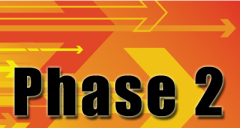It goes without saying but I’m saying it anyway: ERP software implementations are far more involved than installing software like QuickBooks or consumer software like Microsoft Office. You would be amazed at how many business owners believe it realistic to have a new ERP system in place in just a week or two. The robust functionality of a true ERP system requires a proper implementation (planning, installation, configuration, data migration and employee training) that will take at least several weeks if not months in total. This initial planning, installation, and training is what we refer to as “Phase 1” software implementation. Unfortunately, many businesses never see past Phase 1 – but they should.
Phase 2 implementation is the notion of improving upon the bare essentials and fully utilizing the functionality available in the system you have selected. Phase 1 focuses on getting the software up and running and on the essentials required to run your business on the software. However, the most important, but more complex, features are often left to a future date when employees are more comfortable with the software. This is a recommended strategy, but unfortunately these next steps are often forgotten, leaving some of the most powerful features out of employee reach. Chances are you selected your software because of several powerful time-saving features – make sure you get everything you are paying for!
The important of Phase 2 implementation cannot be overstated. Below are some of the benefits gained:
Benefits of Phase 2 Implementation
| Further Reduce Manual Processes | Phase 2 allows for a closer look at the details necessary to squeeze out as much efficiency as possible. Employees who know the software’s best tricks will be far more productive. |
| Increase Business Transparency | Advanced reporting and analysis can be addressed in Phase 2 to ensure that you have access to all data important for measuring business success. |
| Address System Limitations | Software is always evolving so there is always room for improvement. Robust software can easily accommodate changes and eliminate limitations where they once existed. |
| Integrate/Eliminate Other Systems | A robust ERP system should accommodate the vast majority of your business processes. However, sometimes other systems are still required. Phase 2 can focus on finding ways to eliminate the work around systems that are still in place. |
Once you and your employees have become comfortable with your ERP system, it is time to revisit the software and ensure you are getting everything out of it that you can. Sure, you may incur some additional consulting or training costs but the amount of time these advanced features and nuances can save is often substantial.










